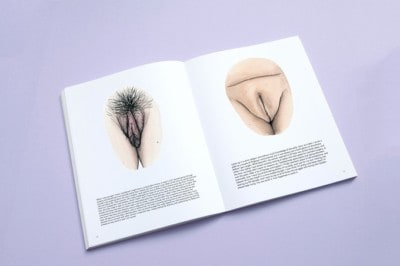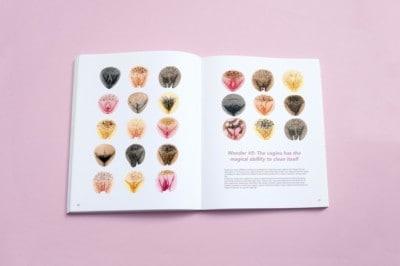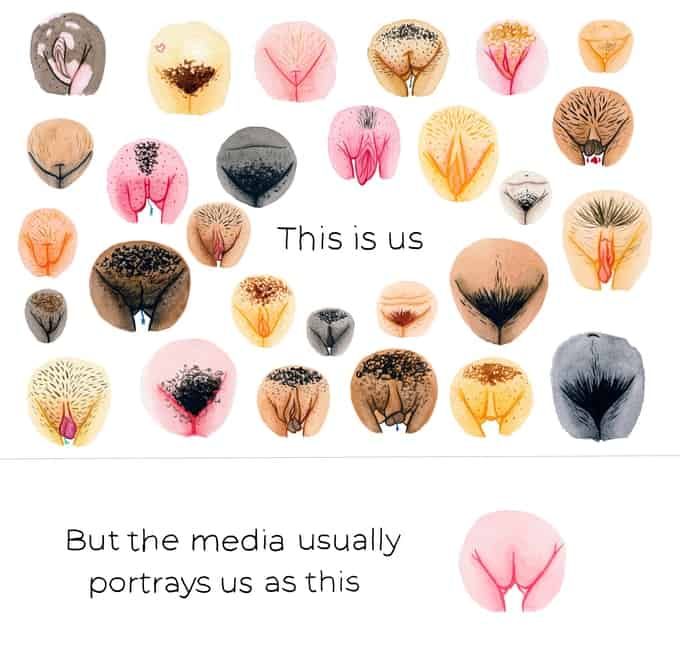Have you ever wished your vulva looked different?
Hilde Atalanta is an illustrator and painter whose project, The Vulva Gallery, is currently being adapted into a beautiful, full-colour book that celebrates vulva diversity. The book is dedicated to all who love their vulva, and to all who don’t (yet). “With this book, I aim to raise awareness around body diversity, to inspire and empower individuals by sharing personal stories, and to provide information on anatomy and sexual health,” says Atalanta.
We chatted with her about the project, vulva myths, and a little-known fact about them!

SDTC: What is one myth about vulvas you’d like to debunk?
HA: There seems to be a myth going around that “if you have a vulva with long inner labia, you’ve had a lot of sex” or that “vulvas with long inner labia have a loose vagina.” This is not true. The size and shape of your labia have nothing to do with the shape and tightness of the vagina, and your labia don’t “grow long” if you have a lot of sex. Just like the shape and size of our ears, hands, noses, breasts, penises and bodies in general differ from person to person, the shape and size of labia will differ too, due to genetics.
The purpose of the labia is to surround and protect the vaginal opening, the urethra and the clitoris. When an individual enters puberty, the genitals start changing. Often, the inner labia will grow, and in about half of all vulvas the inner labia will grow longer than the outer labia. This can vary between 1 to 4 inches, or even more. These are common and healthy variations in shape and size. It has nothing to do with sexual activity, because it’s the natural human body developing and growing as it does, due to genetics. You can be young (and/or never having had sex before) and have long and wavy labia; you can be older (and/or sexually active) and have tiny labia.
Just like the shape and size of our ears, feet, noses, breasts, penises, hands, butts and bodies in general differ from person to person; the shape and size of labia will differ too, due to genetics.
How do projects like The Vulva Gallery help to change our views on our bodies?
We live in a world in which the popular media advertises a “beauty ideal”: very feminine, white and skinny (but with big breasts and a round butt). Many of us don’t recognize ourselves in this “beauty ideal.” Seeing these “perfect” models can make us feel insecure about ourselves, even feeling left out and unworthy, as it’s often an impossible standard we have to live up to.
This negative body image may prevent us from reaching our full potential, because we lack the self-confidence to engage in activities or develop relationships; however, seeing ourselves represented can give us the reassurance that we are normal, that we belong, and that we can stand up for ourselves. If we learn about self-acceptance, self-care and self-love from a young age, this may give us helpful tools to use throughout our lives.
It’s also important to create representation of diversity and to talk about our bodies and share experiences. I’ve noticed that in the past few years, many different body-positivity initiatives have started and there’s a lot of representation going on, especially on social media. But in the popular media, we still see the “standard beauty ideal” represented, which shows we still have much to strive for.
The number of messages I receive tells me there’s a need for an open conversation about body diversity and a need for education. Many of the people (women, as well as people with other kinds of gender identities) who approach me tell me that before they saw The Vulva Gallery, they didn’t know there was so much diversity in vulvae. [They tell me] they learned for the first time that they are normal. I think The Vulva Gallery, and other similar projects, are very much needed since sex education worldwide is often of low quality or doesn’t exist at all.
It’s important to start normalizing the natural human body.
In The Vulva Gallery, you’ll find lots of portraits and personal stories by individuals from all around the world, who contacted me to become part of the gallery. After about a year of running The Vulva Gallery, I realized there’s a lot of power in hearing a story told by someone like you, and being able to recognize yourself (and thinking, “Hey, that’s me!”). I’m just a single person; of course, I can share information on The Vulva Gallery and comfort everyone about their looks, but it’s so much more powerful when this happens by individuals from all around the world.
Also, as many of us aren’t used to speaking about our vulvas (from a young age on, we learn to hide this part of ourselves, and there’s a lot of shame and stigma around the subject), it can be a freeing experience to read how other individuals experience this part of their body. It’s something many of us are insecure about, and it can be very helpful to read that others have the same kinds of insecurities or experiences. Reading other people’s personal stories and seeing a diverse range of vulvas can be very helpful in simply feeling “normal.”

In doing this project, what have you learned about vulvas and/or our perceptions of them?
In the past two years I’ve received so many different stories, and I have painted over a thousand vulva portraits; it has greatly increased my admiration for diversity and my appreciation for the human body. I’m not sure if it has affected my own confidence so much, but it has made me realize I’m part of an incredible natural variety.
Besides that, I also realized that everyone with a vulva has their own history, relationship and emotions towards their vulva. Knowing this has deepened my respect for every individual with a vulva.
Additional remark: The Vulva Gallery is gender-inclusive and welcomes all. Having a vulva doesn’t define your gender identity: many people with a vulva don’t identify as a woman. There are many gender identities, and I’m using inclusive terms to make sure everyone feels welcome.
What is one amazing, little-known fact about vulvas/vaginas that you’d like to share?
The vagina has the ability to clean itself, as it is a self-cleaning organ! It has a special vaginal flora with a pH value between 4 and 5 and bacteria that keep it happy and healthy. Using products inside your vagina may disturb its natural balance, which can cause bad smells and infections.
Shop Hilde Atalanta’s Vulva Gallery Shop here.



 Follow Us On Instagram
Follow Us On Instagram
